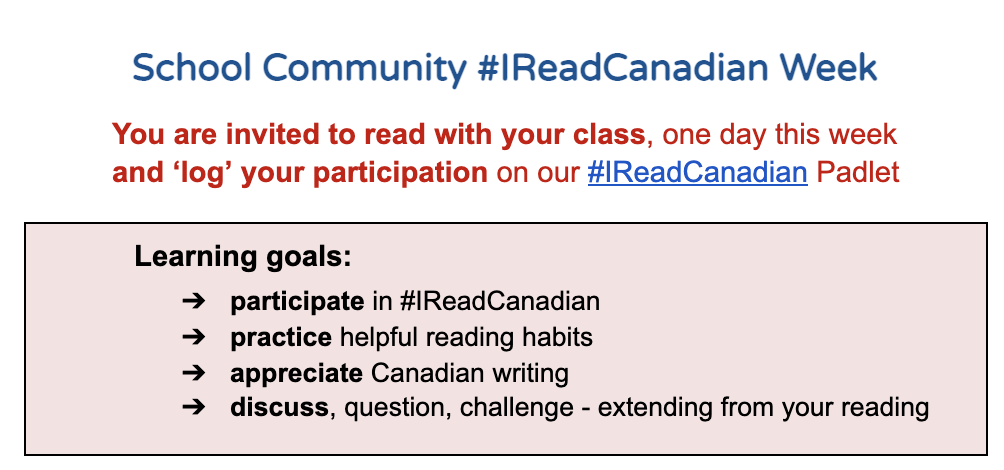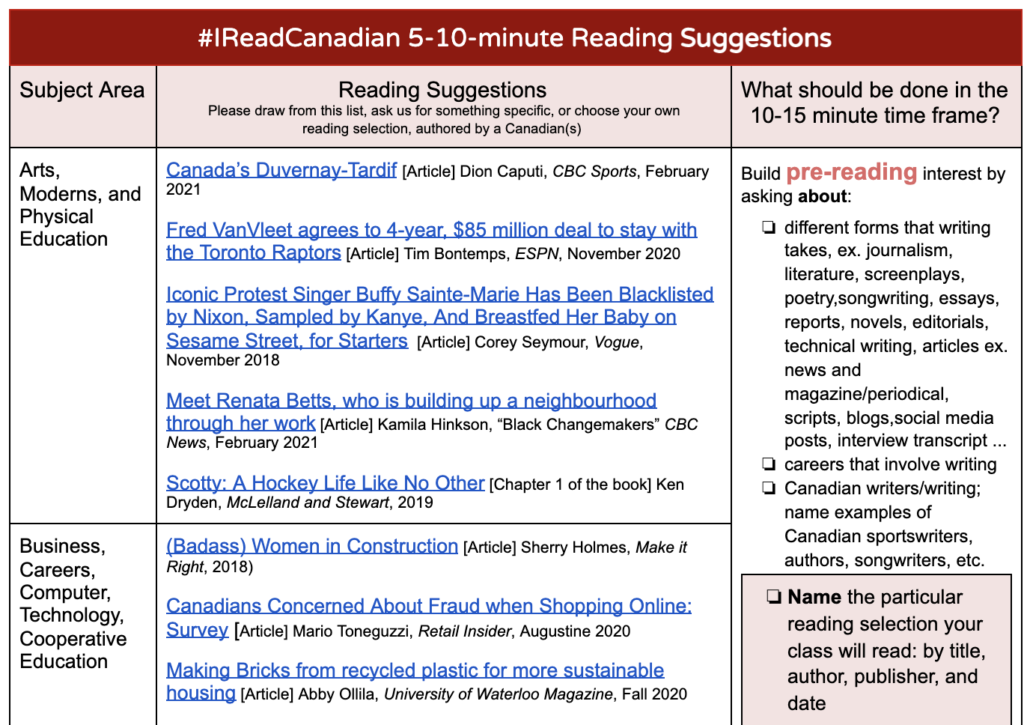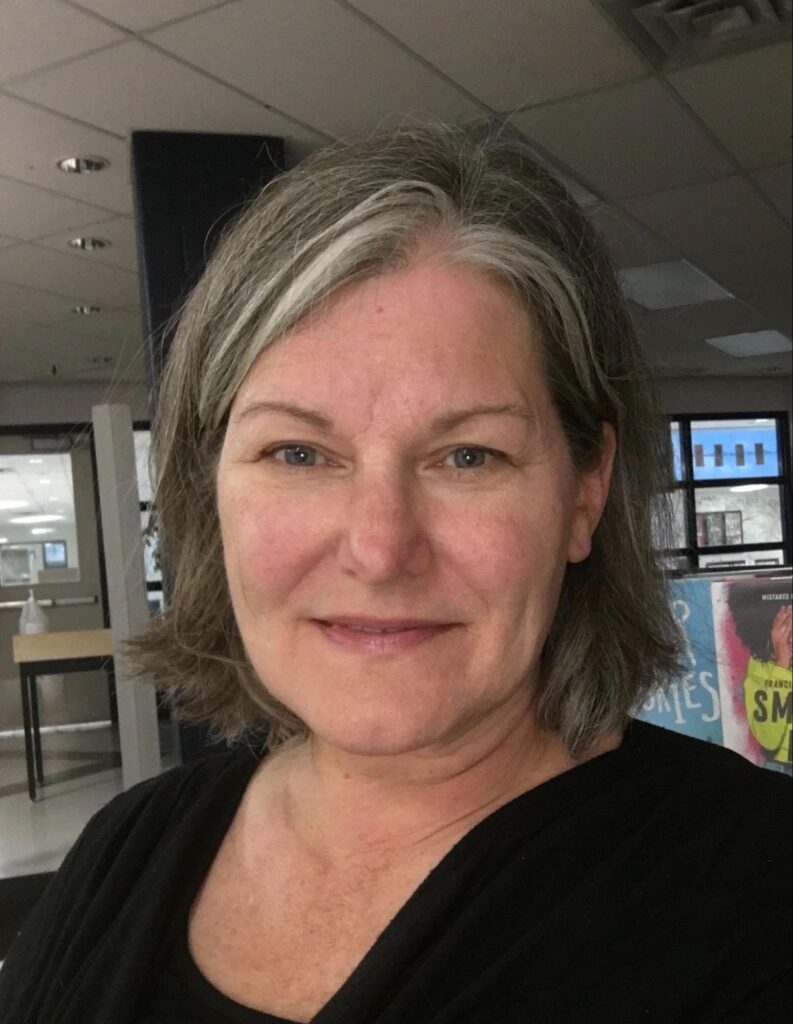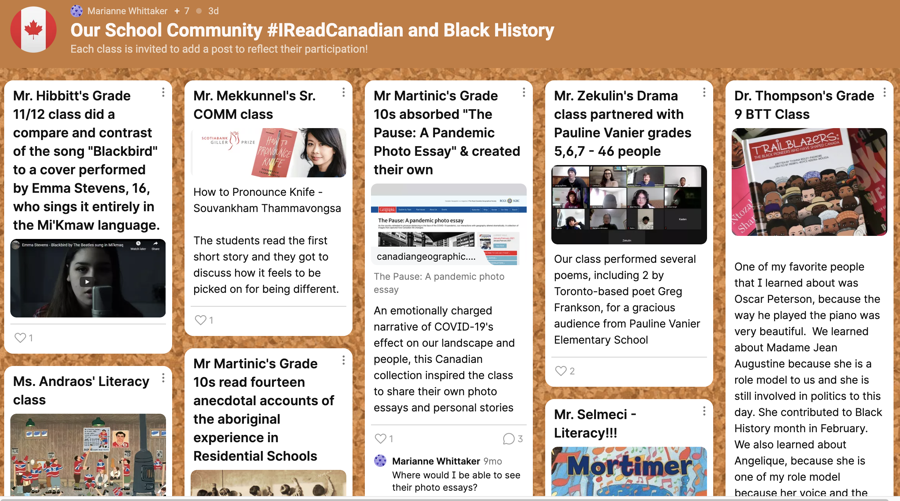
By Marianne Whittaker
I think it’s natural that, in a conversation with a student, any teacher-librarian will draw attention to a Canadian author and a Canadian setting. Yet, it can be difficult in a high school to get students in the general population to notice Canadian authors, and for some, to read at all.
Though readers are still reading, the number of folks who would pick up a book may have shrunk with last year’s closure of school libraries, with the over-indulgence of video games, and binge-watching Netflix, Disney+, Crave, and all the rest.
It will always be a thing though, that the book is better than the movie!
And back at school, we are seeing a surge in club participation by students who are now forced to socialize and crave socialization. Our book clubs are larger than ever. Still kids want what they want – for our book club this year, that’s a whole lot of fantasy! Canadian fantasy authors include White Pine nominees Cory Doctorow (winner 2009), Kenneth Oppel, and Kelley Armstrong, along with newcomer Liselle Sambury’s White Pine nominee Blood Like Magic. But there’s lots of American competition for that reading market.
I grew up in a border town separated from the state of Michigan by the Bluewater Bridge, and not separated from what was mostly American content. On the radio, CBC’s Cross Country Check-Up was our CanCon.
Even my reading wasn’t Canadian. Enid Blyton, Elizabeth Yates, and the ghostwriters for the Hardy Boys and Nancy Drew weren’t Canadian. Nor were Vera Cleaver, Madeleine L’Engle, and Esther Hautzig of my early teens. Agatha Christie and Robert Ludlum were definitely not Canadian.
It matters to me now that I read and listen to Canadian content. Our book club adopted the Forest of Reading’s White Pine collection in 2009 with compelling titles by authors Katherine Holubitsky, Gail Sobat, Marsha Skrypuch, and Donna Milner! Bam, I was baptised by Canadian authors and I’ve never looked back!
It feels like the world has changed quite a bit in 13 short years since then. Our library no longer has the budget to purchase titles in multiples and sharing books between libraries got too tricky. Each year the public library would have multiple copies, but students had to go there and borrow the books themselves. In a couple of the years, the books contained more angst than other genres! The club shared their feedback with the OLA. Still, that was the year we had two students who carried author signs at the awards ceremony. One carried the sign for Exo author Fonda Lee and the other made a longtime friend in a favoured author.

Here’s where I’m going with this. Canadian content can be transformative. What gets published is usually amazing! What child these days doesn’t know Melanie Watt’s brave Scaredy Squirrel, Robert Munch’s confident Paper Bag Princess, and Phoebe Gilman’s stubborn Jillian Jiggs.
Jump back to the teen years in which multiple generations know Eric Walters’ coming of age characters, Martine Leavitt’s realistic fiction, Courtney Summers’ and Alison Van Diepen’s gritty characters, and Beth Goobie’s complexity. Newer on the scene, Cherie Dimaline helps readers to imagine a future that is dependent on Indigenous lives, and Brampton’s Jael Richardson’s sequel to Gutter Child might challenge readers to question their assumptions.
For the many students who aren’t picking up books, what I can do is draw attention to the broader category of Canadian creation. In February of 2021, that’s what we did through our school’s library learning commons. Have a look, if you will, at the Canadian works that we were able to connect teachers and students with. These Canadian works encompass photographs, poems, short stories, Indigenous translations, songs, and more.
In February 2021, here is how we invited our classes to participate:

Here’s the kind of list that I included for each subject area:

We asked teachers to add evidence of their participation using Padlet. You can see by the title that I took the opportunity to cross-connect with Black History Month.
Canadian creations were shared, explored, and celebrated in classes including Music, History, Careers, Drama, English, Business, Math, Communications, Planning for Independence, and English Language Learning.
Canadian sources inspired student creativity:
- Songbird by Fleetwood Mac was sung by 16-year-old Emma Stevens, in Mi’Kmaw inspired many students
- The title story in Souvankham Thammavongsa’s Trillium Book Award winner was read aloud
- The Pause: A Pandemic Photo Essay inspired student essays
- Canadian poems, performed by a drama class, were enjoyed by a partner elementary audience
- A choice grid activity hooked students with Tiyahna Ridley’s Trailblazers
- Students discussed an Ian Lawrence short story on how to talk about race
- They debated about E. Pauline Johnson’s Canadian Born
- Robert Munsch’s beloved Mortimer was read aloud by one of his biggest fans
- Students read 14 first-hand accounts of residential school survivors, discovered in pressprogress.ca
Every teacher who drew attention to Canadian-authored work during I Read Canadian week, was pleased that they did. Next year, the number of classes who participate in I Read Canadian will surely grow. Participation required buy-in from classroom teachers, as the ‘ask’ was on top of their ordinarily planned lesson, in an already compressed schedule. For our part in the library, engaging participation required doggedness, and having that excellent curation of current sources to pique interest.
When you start paying attention to Canadian creators – authors, singers, filmmakers, actors, podcasters – whatever form the content takes, you want more Canadian. In fact, you might find yourself seeking out Canadian creations more and more.
Reading Canadian supports our individual and collective identities as both users and creators of Canadian media and arts of all kinds.
Don’t miss out on #IReadCanadian. Not on any day.

Marianne Whittaker is a 30-year teacher with sixteen in the library commons at St Augustine Secondary School in Brampton, Ontario. She credits her best professional development this year to Jennifer Brezina (library technician) and Tamara Ray (teacher-librarian). This year Marianne actively connected teachers with partner programs like Docs for Schools, DPCDSB Black Futures Speakers Series, #IReadCanadian, Forest of Reading, Eco Schools, and any chance for experiential learning. Making critical connections, building skills, and empowering students are her passions.
